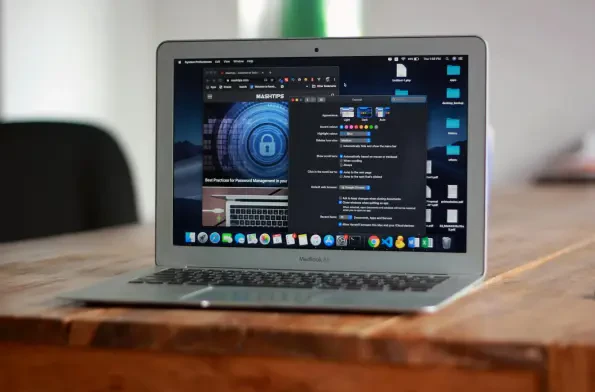In the rapidly evolving domain of cybersecurity, understanding the intricacies of system vulnerabilities is paramount to safeguarding digital infrastructures.
- CVE-2024-44236 exposes flaws in Apple’s macOS systems, particularly in the Scriptable Image Processing System (sips), used for remote code execution via malicious ICC profiles.
- The vulnerability arises from inadequate validation of specific ICC profile tags, leading to memory corruption and unauthorized code execution.
- Exploitation permits attackers to manipulate heap memory, compromise device security, and potentially interfere with critical system processes.
- Network-based detection methods, like monitoring ICC profiles for suspicious headers and offsets, aid in identifying threats before they cause harm.
- Apple has addressed the issue with macOS 15.0.1 update, although many systems remain unpatched, highlighting the need for constant vigilance and security audits.
Looking forward, these vulnerabilities urged organizations to formulate comprehensive cybersecurity strategies, focusing on robust validation and proactive mitigation to safeguard against evolving cyber threats.
In the rapidly evolving landscape of cybersecurity, operating system vulnerabilities remain a critical component for both attackers and defenders. One of the most recent vulnerabilities, CVE-2024-44236, identified by Trend Micro’s Nikolai Skliarenko and Yazhi Wang, has highlighted worrying flaws within Apple’s macOS systems. This vulnerability is particularly concerning due to its association with the macOS Scriptable Image Processing System (sips), making it a prime target for remote code execution through malicious ICC profiles. Discoveries like these underscore the importance of rigorous validation in software components, especially those integral to the everyday functioning of modern computing devices.
Memory Corruption and Code Execution
The Flaw in ICC Profile Handling
The vulnerability in macOS primarily stems from inadequate validation of specific tags in ICC profiles. ICC profiles are essential for ensuring color consistency across various devices. In the flawed sips system, the lutAToBType and lutBToAType tags were not properly checked, allowing attackers to craft malicious profiles that lead to memory corruption. The issue lies in how these profiles handle the Offset to CLUT field; if not correctly managed, it can trigger out-of-bounds writes in heap memory. Such behavior often results in unauthorized code execution when exploited.
The danger of these malformed ICC profiles is exemplified by the ease with which attackers can manipulate system memory. By exploiting the sips tool, which is preinstalled on all macOS systems, an attacker can significantly impact a device’s functionality, compromising its security. This vulnerability demonstrates the systemic risks inherent to insufficiently secured color management utilities, which can become gateway points for broader attacks. Thus, it becomes crucial for developers and security professionals to ensure stringent validation protocols for software utilities involved in color management.
Exploitation Process and Risks
The exploitation process of this vulnerability involves parsing tags with incorrect offsets that enable out-of-bounds memory access. This mismanagement allows attackers to alter memory regions beyond their intended buffer zones, facilitating unauthorized actions. Upon discovering these flaws, Trend Micro researchers highlighted their severity by presenting vulnerable code snippets illustrating potential memory overwrites. Such actions could lead to manipulated function pointers, corrupt metadata, and significant system compromise.
Beyond memory manipulation, attackers might leverage these vulnerabilities to interfere with critical system processes, potentially resulting in significant data breaches. As technology increasingly integrates sophisticated graphics components, the implications of such vulnerabilities can have far-reaching consequences. The importance of robust validation in graphical systems becomes paramount to safeguard against malicious exploitation. Stabilizing these vulnerabilities offers a window into fortifying the integrity of evolving technologies while addressing potential flaws in existing systems.
Detection and Mitigation Strategies
Network-Based Detection Methods
To combat these ICC profile vulnerabilities, network-based detection methods have been recommended as one of the primary strategies for identifying suspicious profiles. Attention to key indicators within ICC profiles, such as header signatures and improper CLUT offsets, can help organizations detect malware before it causes harm. Trend Micro’s analysis suggests deploying network intrusion detection systems to monitor traffic and flag potential threats accurately. This proactive strategy allows businesses to stay ahead of emerging risks and maintain their cybersecurity infrastructure’s integrity effectively.
While Apple has addressed this vulnerability with the macOS 15.0.1 update, many systems remain unpatched, leaving them susceptible to exploitation. Enterprises are urged to audit workflows involving the sips tool, especially when applied in environments handling image files. By segmenting macOS devices and employing robust monitoring systems, risk exposure can be substantially minimized until all systems have received necessary security updates. These actions highlight the ongoing need for vigilance throughout technology deployment and management phases.
Addressing Broader Validation Challenges
The CVE-2024-44236 vulnerability raises concerns regarding the broader issue of insufficient validation within image parsing tools. As operating systems evolve to accommodate HDR and wide-gamut displays, the intricacies of color management require enhanced security measures. Image parsing tools often present attractive attack vectors due to their complexity and wide usage. For tech developers, improving these utilities to prevent unauthorized manipulation becomes a priority in the face of growing digital threats.
Addressing the challenges posed by evolving technologies requires a comprehensive approach encompassing individual system components and broader network infrastructure. Continued collaboration between security experts and system developers is crucial for anticipating future vulnerabilities and adapting accordingly. As industry standards elevate, companies should prioritize research and development aimed at strengthening validation processes, ensuring their systems remain resilient against new and evolving cyber threats.
Future Directions and Cybersecurity Implications
Strengthening System Integrity
Looking ahead, the revealed macOS vulnerability accentuates the need for a robust cybersecurity strategy that extends beyond patching individual flaws. Organizations must recognize the increasing complexity of digital ecosystems and the corresponding need for refined security protocols. By proactively fortifying image processing systems and other vital components, enterprises can better safeguard against potential exploits born from oversights in validation processes.
The implications of ICC profile vulnerabilities resonate with a broader spectrum of cybersecurity considerations, from enhancing system resilience to elevating security standards industry-wide. It is imperative that companies remain vigilant, implementing stringent security practices and continuously integrating the latest innovations in defensive technology. With technological advancement, maintaining a solid defense against adversarial strategies becomes an integral element of effective cybersecurity management.
Continuous Adaptation and Evolution
In the swiftly changing arena of cybersecurity, operating system vulnerabilities continue to be vital elements for attackers and defenders alike. A recent vulnerability, CVE-2024-44236, flagged by Trend Micro experts Nikolai Skliarenko and Yazhi Wang, has unveiled troubling issues within Apple’s macOS systems. This particular vulnerability is alarming due to its connection to the macOS Scriptable Image Processing System (sips). It serves as a prime avenue for remote code execution via harmful ICC profiles. Such findings emphasize the necessity for diligent validation in software components, particularly those essential to the functioning of contemporary computing devices. Operating systems are central to our digital interactions, and any flaws can open gateways for cyber threats, risking user data and system integrity. The discovery of CVE-2024-44236 also showcases the ever-present need for ongoing vigilance and innovation in cybersecurity to shield technology and its users from evolving threats.













